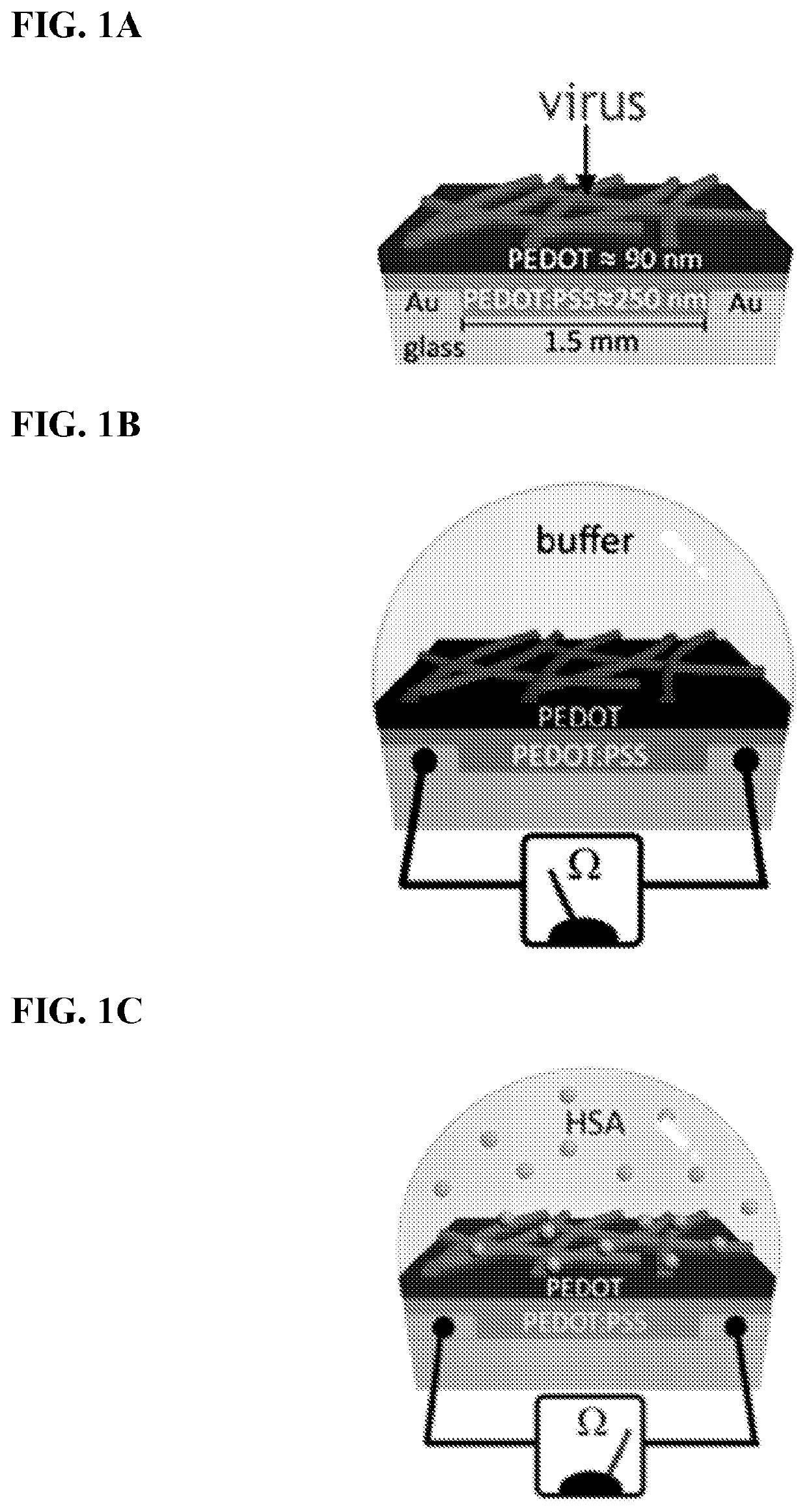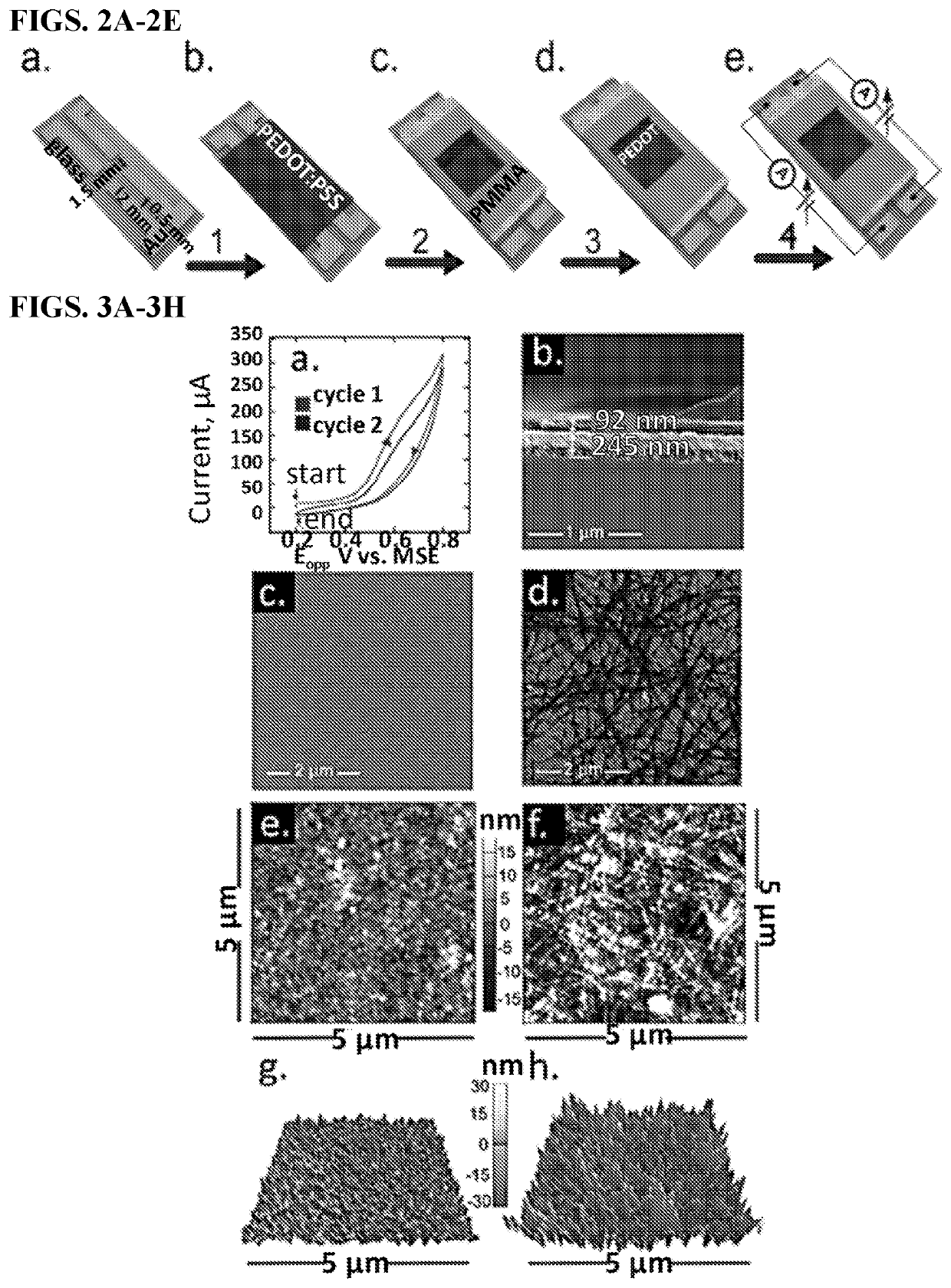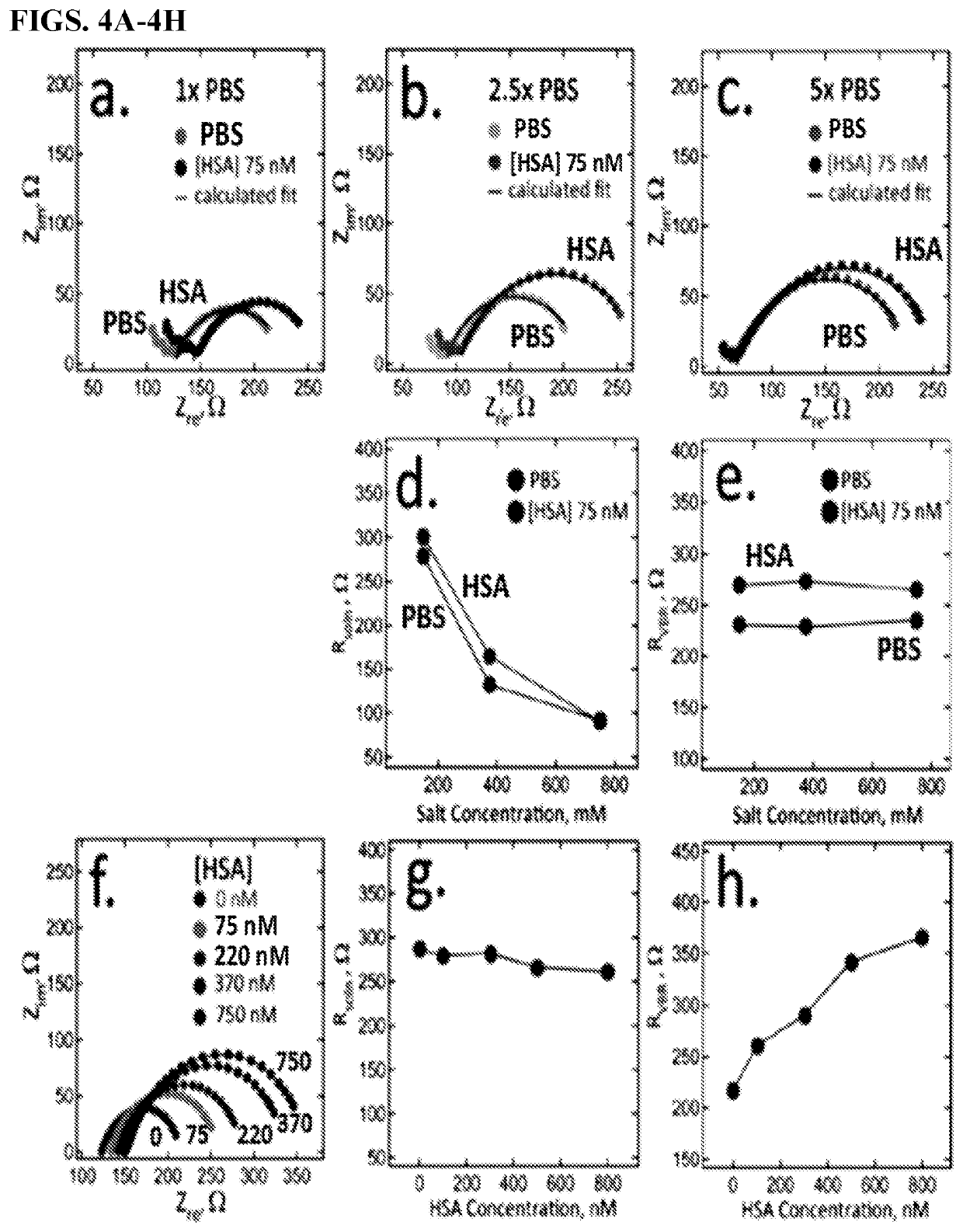Virus bioresistors
- Summary
- Abstract
- Description
- Claims
- Application Information
AI Technical Summary
Benefits of technology
Problems solved by technology
Method used
Image
Examples
Example
Example 1: The Virus Bioresistor: Wiring Virus Particles For the Direct, Label-Free Detection of Target Proteins
[0145]The virus bioresistor (VBR) is a chemiresistor that directly transfers information from virus particles to an electrical circuit. Specifically, the VBR enables the label-free detection of a target protein that is recognized and bound by filamentous M13 virus particles, each with dimensions of 6 nm (width)×1 μm (length), entrained in an ultra-thin (≈2250 nm) composite virus-polymer resistor. Signal produced by the specific binding of virus to target molecules is monitored using the electrical impedance of the VBR: The VBR presents a complex impedance that is modeled by an equivalent circuit containing just three circuit elements: a solution resistance (Rsoln), a channel resistance (RVBR), and an interfacial capacitance (CVBR). The value of RVBR, measured across five orders of magnitude in frequency, is increased by the specific recognition and binding of a target prot...
Example
Example 2: Detection of DJ-1 Bladder Cancer Biomarker With the VBR
[0162]The VBR successfully detected a wide range of concentration for HSA (human serum albumin) protein with 8 nM L3 phage loaded into the PEDOT film of the sensor. To test the diverse applicability in terms of protein detection, DL-1 phage was incorporated into the sensor for the detection of DJ-1 bladder cancer biomarker. DJ-1 is a ˜20 kDa protein as compared to HSA, a 66 kDa protein detected in Example 1.
[0163]VBRs were fabricated with some parameters imposed on each step of fabrication (FIG. 8). The VBRs for DJ-1 were subjected to sensing experiments with the baseline reading in synthetic urine (step 5 of FIG. 8). In an effort to generate a higher signal and achieve lower detection limits, changes were introduced in step 2; wherein the base layer of baked PEDOT:PSS was spin-coated to yield a range of DC resistances across the electrodes. Sensor fabrication remained the same for all steps that followed (See, Bhasin...
Example
Example 3: Propagation of M13 Phage-Displayed Ligands From Phagemids
[0168]This example defines the processes for the preparation of phage-displayed polypeptide ligands. FIG. 17 shows the operational flowchart, as described in detail herein.
[0169]Equipment and supplies: Disposable baffled flasks with vented closure, 125-250 mL; Thompson Ultra Yield™ Flasks, 500 mL-2.5 L; AirOtop™ Enhanced Seals; Polypropylene centrifuge bottles, 250-500 mL; Quartz Cuvette, 50 μL; Disposable cuvettes; Ice bucket; Polypropylene beaker, sterile, 100-250 mL; 1.5-5 mL polypropylene microcentrifuge tubes; 500 mL polypropylene graduated cylinder; Manual Micropipettes, 0.5 μL-5000 μL; Eppendorf Repeater® M4; Pipette controller; Aerosol barrier, low retention pipette tips, 10 μL-1250 μL, sterile; 1000-5000 μL Macro disposable sterile pipet tips; Eppendorf Combitips advanced®, 25-50 mL; Disposable serological pipets, 5-50 mL; Beckman Avanti J-25 centrifuge; Beckman JA-14 or JA-10 fixed-angle rotor; Cary 60 UV-...
PUM
| Property | Measurement | Unit |
|---|---|---|
| Length | aaaaa | aaaaa |
| Thickness | aaaaa | aaaaa |
| Electrical resistance | aaaaa | aaaaa |
Abstract
Description
Claims
Application Information
 Login to View More
Login to View More - R&D
- Intellectual Property
- Life Sciences
- Materials
- Tech Scout
- Unparalleled Data Quality
- Higher Quality Content
- 60% Fewer Hallucinations
Browse by: Latest US Patents, China's latest patents, Technical Efficacy Thesaurus, Application Domain, Technology Topic, Popular Technical Reports.
© 2025 PatSnap. All rights reserved.Legal|Privacy policy|Modern Slavery Act Transparency Statement|Sitemap|About US| Contact US: help@patsnap.com



